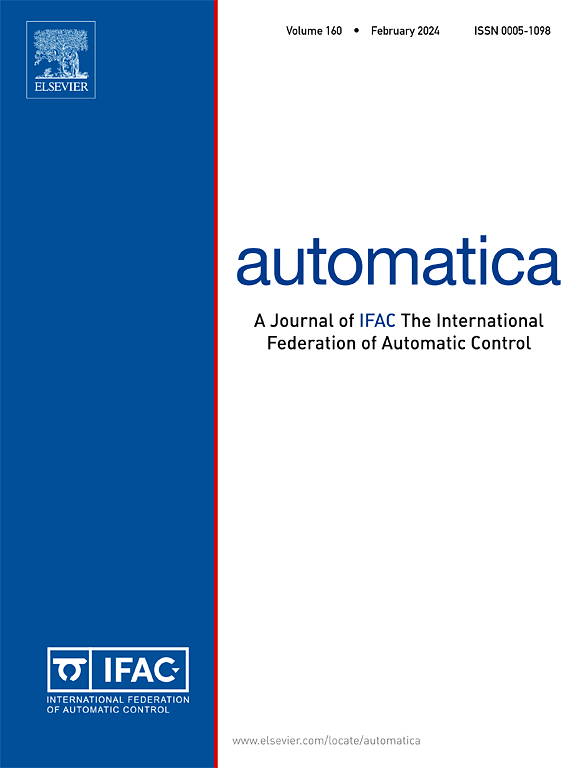Optimal stochastic event-triggered attack on remote state estimation
IF 4.8
2区 计算机科学
Q1 AUTOMATION & CONTROL SYSTEMS
引用次数: 0
Abstract
This paper designs optimal stealthy deception attacks for Kalman filter-based remote state estimation, focusing on stochastic event-triggered attack scheduling. First, an event-based attack strategy is proposed for adversaries who can intercept innovations transmitted by smart sensors, and the optimality is achieved among all stealthy candidates using the same information set and scheduling. Additionally, the parameters of the employed scheduling are fine-tuned by solving a convex optimization problem. Furthermore, with the help of a variable separation technique for analyzing probability density functions under the event-triggered mechanism, this work designs an optimal attack strategy for attackers who can install additional sensors to measure the system states. Simulations verify the effectiveness of the proposed methods.
远程状态估计的最优随机事件触发攻击
本文设计了基于卡尔曼滤波的远程状态估计的最优隐身欺骗攻击,重点研究随机事件触发攻击调度问题。首先,针对能够拦截智能传感器传输的创新信息的攻击者,提出了一种基于事件的攻击策略,并在使用相同信息集和调度的情况下,实现了所有隐身候选对象之间的最优性。此外,通过求解一个凸优化问题对所采用的调度参数进行了微调。此外,在事件触发机制下,利用变量分离技术分析概率密度函数,设计了一种最优攻击策略,攻击者可以安装额外的传感器来测量系统状态。仿真结果验证了所提方法的有效性。
本文章由计算机程序翻译,如有差异,请以英文原文为准。
求助全文
约1分钟内获得全文
求助全文
来源期刊

Automatica
工程技术-工程:电子与电气
CiteScore
10.70
自引率
7.80%
发文量
617
审稿时长
5 months
期刊介绍:
Automatica is a leading archival publication in the field of systems and control. The field encompasses today a broad set of areas and topics, and is thriving not only within itself but also in terms of its impact on other fields, such as communications, computers, biology, energy and economics. Since its inception in 1963, Automatica has kept abreast with the evolution of the field over the years, and has emerged as a leading publication driving the trends in the field.
After being founded in 1963, Automatica became a journal of the International Federation of Automatic Control (IFAC) in 1969. It features a characteristic blend of theoretical and applied papers of archival, lasting value, reporting cutting edge research results by authors across the globe. It features articles in distinct categories, including regular, brief and survey papers, technical communiqués, correspondence items, as well as reviews on published books of interest to the readership. It occasionally publishes special issues on emerging new topics or established mature topics of interest to a broad audience.
Automatica solicits original high-quality contributions in all the categories listed above, and in all areas of systems and control interpreted in a broad sense and evolving constantly. They may be submitted directly to a subject editor or to the Editor-in-Chief if not sure about the subject area. Editorial procedures in place assure careful, fair, and prompt handling of all submitted articles. Accepted papers appear in the journal in the shortest time feasible given production time constraints.
 求助内容:
求助内容: 应助结果提醒方式:
应助结果提醒方式:


